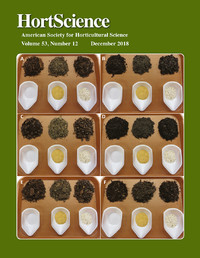Sweetpotato is usually propagated in Uganda by vine cuttings from mature crops, but sometimes sprouts from storage roots are used, especially in drought-prone areas. No information is available on whether the storage of roots of Ugandan cultivars are infected with the viruses and whether the sprouts on them express symptoms so that farmers can eliminate diseased ones. Information on root sprout reversion from virus infection is also lacking. The storage roots of five sweetpotato cultivars was sourced either by random selection of roots from already harvested roots or obtained from symptomless plants selected before harvest at Makerere University Agricultural Research Institute, Kabanyolo (MUARIK), and the National Semi Arid Resources Research Institute (NaSARRI). Roots were also generated in a screenhouse after being inoculated with Sweet potato feathery mottle virus (SPFMV) and/or Sweet potato chlorotic stunt virus (SPCSV). More than 70% of sprouts from roots of all the cultivars selected after harvest at MUARIK and NaSARRI were infected with the viruses. For roots obtained from symptomless plants, 64% and 21% of the sprouted roots from MUARIK and NaSARRI were infected with the viruses, respectively. Most of the root samples from MUARIK had visible virus symptoms on sprouts and tested positive for both SPFMV and SPCSV, whereas those from NaSARRI did not show symptoms and were infected primarily with SPFMV. Plants graft-inoculated with either SPCSV or SPFMV alone produced both infected and noninfected roots, whereas all the root sprouts from dually infected plants showed virus symptoms. Reversion from virus infection was observed on root sprouts infected singly with SPFMV, whereas those infected with SPCSV showed recovery only, and none of the root sprouts infected by both viruses showed recovery. This study proves that roots are good reservoirs for viruses, and reversion occurs only when singly infected with SPFMV. Therefore, there is a need to establish seed channels in which seedstock is cleaned continuously and made available to farmers.
Virus movement from infected sweetpotato vines to roots and reversion on root sprouts
Citation: Adikini, S.; Mukasa, S.B.; Mwanga, R.O.M.; Gibson, R.W. 2019. Virus movement from infected sweetpotato vines to roots and reversion on root sprouts. HortScience. ISSN 0018-5345. 54:1. pp. 117-124.
2019-02-12
CROP PROTECTION, SWEETPOTATO AGRI-FOOD SYSTEMS, SWEETPOTATOES
Africa, Eastern Africa
Uganda
journal_article

